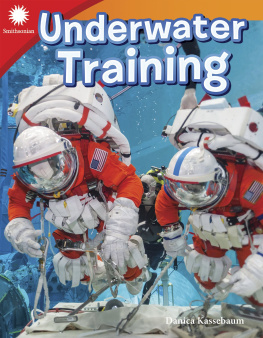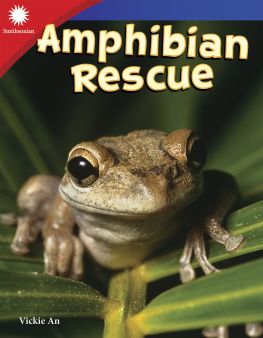Marissa Hernandez - The Wright Brothers
Here you can read online Marissa Hernandez - The Wright Brothers full text of the book (entire story) in english for free. Download pdf and epub, get meaning, cover and reviews about this ebook. year: 2018, publisher: Teacher Created Materials, genre: Computer. Description of the work, (preface) as well as reviews are available. Best literature library LitArk.com created for fans of good reading and offers a wide selection of genres:
Romance novel
Science fiction
Adventure
Detective
Science
History
Home and family
Prose
Art
Politics
Computer
Non-fiction
Religion
Business
Children
Humor
Choose a favorite category and find really read worthwhile books. Enjoy immersion in the world of imagination, feel the emotions of the characters or learn something new for yourself, make an fascinating discovery.
- Book:The Wright Brothers
- Author:
- Publisher:Teacher Created Materials
- Genre:
- Year:2018
- Rating:5 / 5
- Favourites:Add to favourites
- Your mark:
- 100
- 1
- 2
- 3
- 4
- 5
The Wright Brothers: summary, description and annotation
We offer to read an annotation, description, summary or preface (depends on what the author of the book "The Wright Brothers" wrote himself). If you haven't found the necessary information about the book — write in the comments, we will try to find it.
The Wright Brothers — read online for free the complete book (whole text) full work
Below is the text of the book, divided by pages. System saving the place of the last page read, allows you to conveniently read the book "The Wright Brothers" online for free, without having to search again every time where you left off. Put a bookmark, and you can go to the page where you finished reading at any time.
Font size:
Interval:
Bookmark:
0covercover.xhtmlcover1page0001page0001.xhtml22page0002page0002.xhtmlThe Wright Brothers33page0003page0003.xhtml44page0004page0004.xhtmlTable of Contents The Fight for Flight 4 Creating a Flying Machine 6 Up, Up, Up 12 Ready for Takeoff 18 A Practical Airplane 24 STEAM Challenge 28 Glossary 30 Index 31 Career Advice 3255page0005page0005.xhtmlThe Fight for Flight Orville and Wilbur Wright were brothers. From an early age, they liked to experiment. They wanted to build a flying machine. Both had worked on printing presses and motors. They also owned a bicycle shop. With the same tools they used to fix the bikes in their shop, the brothers built a glider. It used wind to rise off the ground, just like a kite! The Wright brothers spent years improving the design of the glider. Their goal was to build a machine that would lift a person into the sky. For years, many people dreamed of manned flight. But nobody had ever done it. The Wright brothers were sure that they could be the ones to finally make the dream a reality. There would be many problems along the way. Countless hours would be spent studying and testing their plans. It would take a lot of hard work if they wanted to become the fathers of flight. Orville Wright (right) works at the bicycle shop with his friend Edwin H. Sines (left).66page0006page0006.xhtmlWilbur and Orville Wright77page0007page0007.xhtmlCreating a Flying Machine The Wright brothers were inventors. They took what they knew and applied it to new ideas. They knew how bicycles worked. This helped them plan the design of their glider. Just like Riding a Bike Riding a bike is similar to flying an airplane. Both need balance and control. Both machines need a strong frame built out of light materials. The materials need to be wind resistant and have an aerodynamic shape. This helps with stability. For years, the Wright brothers studied how things fly. They researched birds and wings. They looked at the shapes, sizes, and angles that allow birds to fly. One thing they noticed was how birds warped, or twisted, their wings to help them turn in the air. This led them to an idea for how they could turn their flying machine. Eagles use wing warping to turn in the air.88page0008page0008.xhtmlThis sketch by Wilbur shows the side view of the 1899 Wright Kite. Engineering Wing Warping Wing warping is one way to control an airplane. It is a system of cables that twist the edge of the wings in opposite directions. This allows a plane to turn by leaning more to the right or left. The Wright brothers found that this was an easy way to maneuver planes. Wing warping is similar to flying a paper airplane. If the tips of the wing are curled back, it glides and turns.99page0009page0009.xhtmlBuilding the Glider Before the Wright brothers built a glider, they tested wing warping on a kite. This was not an ordinary kite. The Wright Kite was shaped like a box and was 2 meters (6 feet) long. It also had large wings on each side that could twist and turn. The brothers' goal was to see whether changing the shape and angle of the wings would help steer a plane. They were right! The Wright Kite was balanced and controlled. Orville and Wilbur were ready to start building a glider. The first glider was a larger version of the Wright Kite. The brothers mainly focused on the shape and size of the wings. Through their research, they knew that the wings had to be slightly curved in the front and straighter in the back. They also found that the wings had to be very large for balance. 1900 Wright Glider1010page0010page0010.xhtmlillustration of Wilbur flying the Wright Kite Arts Sketches Before they built anything, the Wright brothers looked at other designs for gliders. They used them to learn what worked and did not work in the past. They also made their own sketches. Sketching is a good way to look at something before building it. Drawings let people see possible problems and change their ideas before they build.1111page0011page0011.xhtmlThe glider had to be sturdy. The brothers used pinewood to build the wings and wing struts. Wing struts are poles that hold the top and bottom wings together. Special fabric was wrapped around the wooden wings. This would help keep the wings together if the glider made a hard landing. The brothers were ready to test their first glider. They launched the machine in Kitty Hawk, North Carolina. The area was known for having wide-open spaces and strong winds. The Wrights first tried flying the glider as a kite. This let them test how high and steady the glider could get. The brothers successfully flew the glider as a kite several times. Then, a gust of wind made it crash. They had more work to do. They went back home to start over. This photo shows the 1900 Glider after it crashed.1212page0012page0012.xhtmlTom Tate was a young boy who helped the Wright brothers fly the first glider. Because he was small, he would lie in the middle of the glider while the brothers controlled the glider from the ground.1313page0013page0013.xhtmlUp, Up, Up! The Wright brothers came home with more ideas. They knew the design and structure of the glider were right. The controls of the glider also worked. But the brothers wanted the next glider to have more lift to keep it in the air. This meant their design needed to change. The Next Glider They looked at the wings again. They believed bigger wings would give the glider more lift. To get the right size, they calculated lift. They also calculated how much drag would hold the plane back. And they changed the type of fabric wrapped around the wings. Even though they made many changes, this glider did not work either. It still did not have enough lift. The glider was also hard to control. The brothers were very disappointed. Their hard work had not yet paid off. Drag1414page0014page0014.xhtmlLift Thrust Weight Science The Four Forces There are four forces that affect how things fly. Weight is the force of gravity, which pulls a plane down. Lift moves a plane upward. It is created by the wings of a plane. Thrust moves a plane forward in motion with force created by an engine. Drag pulls a plane back, in the opposite direction of motion. The four forces need to balance out one another for a plane to successfully fly.1515page0015page0015.xhtmlThe 1902 Glider The Wright brothers got back to work. The glider's lift and drag were big problems. This meant they had to experiment before building again. They spent a lot of time looking at how the four forces weight, lift, thrust, and drag acted on a glider. The first big change was a new control system. While the plane was flying, it would be able to tilt its nose up and down, changing the pitch. It could tilt its wings up and down, known as roll. The tail could also turn the plane left or right, which is known as yaw. For the first time, a flying machine could be fully controlled. The brothers were ready for another test. They wanted to make sure the structure and control were right. They went back to Kitty Hawk. Just like they did before, the brothers first flew this glider like a kite. The results were good. The glider had enough lift, and the flight controls worked. In 1902, the Wright brothers run their glider through its third test.1616page0016page0016.xhtmlwind tunnel Technology New Inventions The Wright brothers invented two devices to test their glider. The first looked like a regular bicycle with an extra wheel on the handlebars. It measured air pressure and wing angles. The second was a wind tunnel (shown above), which was a wooden box with a fan and an engine inside. The engine made wind. This let them test the control of a glider without the risk of it crashing.1717page0017page0017.xhtmlIt was time for the Wright brothers to test the glider themselves. There was no seat. They lay in the middle of the wings. It worked. They did it! Now, it was time to change their glider into a flyer by giving it thrust. The 1903 Flyer The brothers still had a lot of work to do. They needed to add an engine and propellers. This would give the flyer thrust. The engine was heavy. They would need to change the size of the wings of the flyer to add lift. The flyer had to be stronger to hold the extra weight of the engine. The brothers built their own engine. They also invented a propeller and transmission system to give it thrust. The flight controls from the glider were used on the flyer. The Wrights built it and headed back to Kitty Hawk. This time, they were going to test their first powered airplane. motor of the 1903 Flyer1818page0018page0018.xhtmlpainting of the 1903 Flyer at Kitty Hawk Mathematics Wing Sizes The Wright brothers changed the size of the wings many times. They had to figure out how big the wings needed to be. To do this, they used math. They divided the wingspan by the wing area. This gave them the information that helped them solve the lift and drag problem.1919page0019page0019.xhtmlReady for Takeoff The Wright brothers worked on their flyer for three months. They waited for good weather. Everything had to be perfect for takeoff. Launching Rail Since the flyer was larger than the gliders, the brothers had to change the way it took off. They could not hold the ends of the glider to launch it into the air. The flyer was too heavy and complex to do this. So they built another device. It was a launching rail. It was made of four long metal pieces that created a track. The brothers wanted the flyer to move down the track to gain speed and then take off. They were nervous, but the brothers were ready. After many years of working on a flying machine, they knew it was time. The Wright Flyer is ready for flight in 1903.2020page0020page0020.xhtmlThe flyer was heavier than the brothers thought it would be. It weighed 274 kilograms (605 pounds)! The 1903 Wright Flyer is on display in the National Air and Space Museum.2121page0021page0021.xhtmlThe First Human Flight The Wright brothers put their flyer to the test. On a cold December day, Wilbur climbed on board and headed to the launching rail. The flyer went down the tracks and lifted up, but it stalled and crashed into the sand. The brothers were still hopeful. They fixed the flyer and tried again three days later. This time, Orville was the pilot. It went down the launching rail and stayed up for 12 seconds. Although this was a short time, it proved that the flyer worked! The Wright brothers had made history. It was the first manned, controlled flight on a fully powered airplane. The brothers made three more flights that day. Each time, the flyer traveled farther and longer. The final trip lasted 59 seconds and traveled 260 m (853 ft.) before landing. The brothers made humans fly! Orville was the first to stay in the air.2222page0022page0022.xhtmlThe Wright brothers flipped a coin to see who would get to ride the flyer first. Wilbur won. illustration of the first flight at Kitty Hawk2323page0023page0023.xhtmlBut the journey was not over. The Wright brothers were not finished with aviation. They continued to work on more flyers. Their next goal was to build an even better plane that would stay in the air for a longer period of time. The 1904 Flyer The brothers began to work on a new flyer. They wanted it to stay in the air longer. The first flyer had the right controls, but it was not stable. The next one had to be more reliable. The brothers added more weight to the front of the flyer. This improved balance. Then, they moved the elevator. This controlled the pitch and lift of the wings. With these changes, the 1904 Flyer had an improved design. It was the first plane that flew in a complete circle. The 1904 Wright Flyer made a total of 105 flights.2424page0024page0024.xhtmlWilbur (left) and Orville (right) sit outside their home in 1909.2525page0025page0025.xhtmlA Practical Airplane After the circular flight, the brothers knew their flying machine was on the right track. But there were more changes to be made. The Wrights built one more flyer in 1905. They doubled the size of the elevator. The flyer had much more control. They could fly this plane longer than any of the others. Now, they were ready to show their flyer to the world. People did not believe them at first. They thought the brothers were lying about their flights. The Wrights went to many places around the world to show their flyers in action. Everyone was amazed. Wilbur and Orville Wright became known as the forefathers of manned flight. After that, the brothers started the Wright Company. They built and sold many airplanes. They even worked with the U.S. military on planes. The 1905 Flyer is on display in Dayton, Ohio. This is where the Wright brothers were from. It is where they built most of their flying machines. Dayton, Ohio2626page0026page0026.xhtmlIn 1908, Wilbur flies a plane in France.2727page0027page0027.xhtmlFlying Today Wilbur and Orville Wright are proof that testing and improving an idea works. They wanted to build a machine that would help people fly. And they did it! But that wasn't the end of their journey. They kept working to make their designs better. The brothers changed the world. It didn't take long for airplanes to become a common way to travel. Less than 20 years after the first test flight, people flew across the ocean! Many of the same concepts from the Wright Flyer are used to build airplanes today. Many of the controls that the Wright brothers invented are still used. The world owes a lot to the two bike shop owners who had dreams of flying.2828page0028page0028.xhtmlOrville (left) and Wilbur (right) only flew together once. It was in 1910. They both rode on a flyer for a total of six minutes.2929page0029page0029.xhtmlSTEAM CHALLENGE Define the Problem Wilbur and Orville Wright changed their design many times before the first manned flight in 1903. They experimented with many parts of their gliders and flyers. Your challenge is to put one of their ideas to the test. Can you design a glider to transport cargo? Constraints : You may only use paper and tape to build your glider. Criteria : The glider must transport cargo (10 paperclips) a distance of 4 meters.3030page0030page0030.xhtml1 Research and Brainstorm How did Wilbur and Orville Wright experiment with adding weight to their gliders and flyers? What did they find? Where could a glider hold extra weight? 2 Design and Build Plan the design of your glider. You may find and use folding instructions online and adjust the design or create your own from scratch. Where will you add the paperclips to the glider? How will you secure the paperclips? Build the glider and add the cargo. 3 Test and Improve Test the glider twice, and write down the longest distance the glider flies. How can you improve the glider? Will you move the cargo? Modify your design, and try again. 4 Reflect and Share Could you use a different material to make the gliders? What other parts of the paper gliders could be changed? Could you add more cargo to your glider?3131page0031page0031.xhtmlGlossary aerodynamic something that has been designed for motion in the air aviation having to do with the operation of aircraft drag the force that acts against the movement of an object elevator part of a plane that controls the plane's angle up or down flyer a flying machine that uses an engine; an airplane glider an aircraft that does not use an engine launching rail a set of tracks that help a plane with takeoff lift a force that acts to hold a plane up in the air machine a device with moving parts that uses power to do work pitch slant or angle of an object up and down roll tilt or angle of an object from side to side stability the quality or state of being steady and not easily changing transmission the part of an engine that turns the power of the engine into the spinning of wheels yaw turning an object from right to left3232page0032page0032.xhtmlIndex 1900 Glider 1902 Glider, 1903 Flyer, 1904 Flyer, 1905 Flyer, Dayton, Ohio drag flight controls Kitty Hawk, North Carolina launching rail lift Tate, Tom thrust wing struts wing warping Wright Company Wright Kite3333page0033page0033.xhtmlCareer Advice from Smithsonian Do you want to design airplanes? Here are some tips to get you started. Airplane designers use math and science skills, so study hard in those classes. The next time you're on an airplane, notice how it pitches, yaws, and rolls. These play an important role in how a plane flies. Try putting together model airplanes that's how I learned about planes as a kid! Russ Lee, Chair, Aeronautics Department We can learn so much from the Wright brothers, especially the fact that they never gave up. They designed, built, and tested their gliders and planes. Then, they made improvements. Creativity and problem solving are an important part of STEAM. If you want to design planes or trains or buildings or highways, you must have that same tenacity. Mike Hulslander, How Things Fly Gallery Manager3434page0034page0034.xhtmlRead and Respond 1. Why did the Wright brothers test their gliders at Kitty Hawk, North Carolina? 2. How are gliders and flyers alike? How are they different? 3. Describe how wing warping helped the Wright Flyers. 4. How do the forces of lift, drag, thrust, and weight affect flight? 5. What are some traits the Wright brothers had that helped them build and refine their flying machines? 6. Make a list of the Wright Brothers' top five accomplishments. Explain why each one deserves to be on the list.3535page0035page0035.xhtmlThe Wright Brothers Have you ever wondered how something flies? Wilbur and Orville Wright had the same question more than a hundred years ago. They owned a bicycle shop, but they wanted to create a flying machine. Today, the Wright brothers are known as the forefathers of flight.36
Next pageFont size:
Interval:
Bookmark:
Similar books «The Wright Brothers»
Look at similar books to The Wright Brothers. We have selected literature similar in name and meaning in the hope of providing readers with more options to find new, interesting, not yet read works.
Discussion, reviews of the book The Wright Brothers and just readers' own opinions. Leave your comments, write what you think about the work, its meaning or the main characters. Specify what exactly you liked and what you didn't like, and why you think so.













